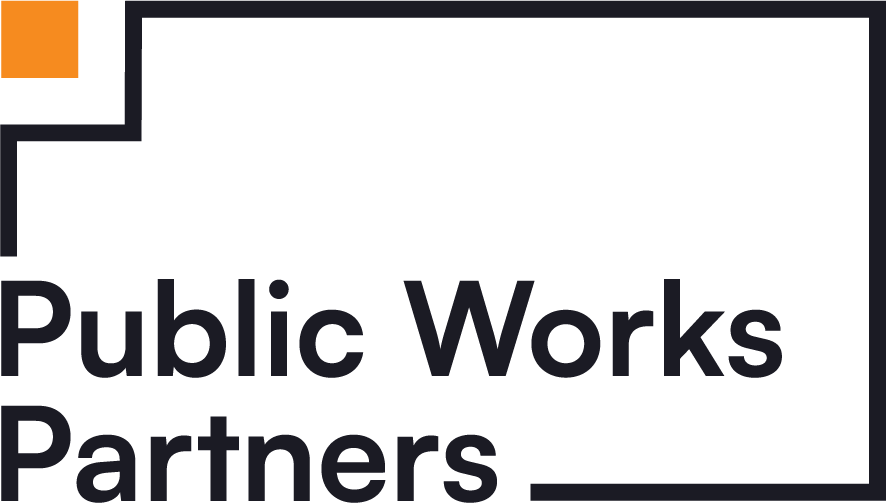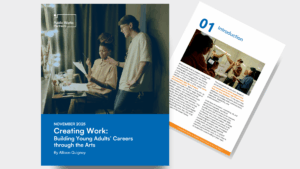Everyone who celebrates has heard the origin of Thanksgiving: a celebration of plenty shared between colonists and the Wampanoag at Plymouth Colony. Despite the overwhelming national mythology around Thanksgiving, there are only two written accounts that depict the three-day festival, both of which describe a similar sense of “plenty” and of being “so far from want.” However, it was more than a celebration of abundance, it was also a testament to the infrastructure that made that abundance possible. In the span of only eleven months, the pilgrims, with substantial aid from the Wampanoag, created the built environment and basic infrastructure that made the three-day feast for 53 pilgrims and “some ninety” Wampanoag men possible. Today, Thanksgiving celebrations continue to serve as a celebration of the country’s increasingly complex systems of agriculture, transportation, and commerce.
Stocking Today’s Harvest Festival
Four-hundred years have passed since the pilgrims’ first New England harvest festival in the Fall of 1621. Over the course of those four centuries, the holiday evolved into the two-day shindig we celebrate today: Thanksgiving and Black Friday. Nearly 45-million turkeys will be eaten this Thanksgiving, and retail stores will bring in over $9 billion in sales the next day. America’s labyrinth of infrastructure and logistics provides an annual display of what it is capable of by transporting all the food, goods, and people for the 4th Thursday of November. Unfortunately, as we enter the holiday season this year, more is in doubt. The ongoing Great Supply Chain Disruption has caused ripple effects that will be seen in almost every area of commerce, raising prices and leading to shortages that will impact this year’s holiday.
However, if there’s one thing to be grateful for this Thanksgiving, it’s that the turkey supply chain, while pricier than usual, was spared the worst of the disruptions.
Long gone are the days when the feast’s main act was locally hunted fowl. Today, about ninety percent of turkeys come home from the grocery store frozen. And two-thirds of those frozen birds come from only six states: Minnesota, North Carolina, Arkansas, Indiana, Missouri, and Virginia. Chances are high that more than a few of the turkeys being eaten in Plymouth, Massachusetts this year were raised and processed in North Carolina. Although it may seem complicated, the process of raising a turkey in North Carolina, freezing it, and shipping it hundreds of miles north to Massachusetts is relatively simple when compared to what it takes to get a fresh turkey on the table. A frozen turkey may have been killed up to three years before it gets shipped to a store, which gives producers lots of wiggle room when projecting how many birds to raise for the next holiday season. If too many turkeys are raised one year, the frozen leftovers will be good for the next. Fresh turkeys, on the other hand, require retailers to carefully forecast demand and communicate with farmers, distributors, and logistics carriers. Then there’s the timing of egg incubation so the turkeys are mature by November. Once processed, unfrozen turkeys can only stay fresh for 21 days, which requires a rush of labor and transportation resources in the days before Thanksgiving. All the while, the turkeys need to occupy precious, refrigerated real estate in warehouses, trucks, and grocery stores.
Since most Americans don’t live where their food is produced, and much of it needs to be kept cool, a complicated chain of transportation and storage known as the cold chain has emerged to keep us eating fresh food year round. The distribution of both fresh and frozen turkeys for Thanksgiving would be impossible without this system, which consists of a network of refrigerated warehouses connected by a web of refrigerated trucks and cooled containers for ships or air. But of course, it isn’t just America’s urbanizing population that relies on this technology: the entire world is moving to cities. In order to keep people fed, and to satisfy the demand for foreign grown foods, the cold chain is expanding at an exponential rate and is an integral aspect of the global supply chain.
The Cold Chain Strain
From both an environmental and economic perspective, the proliferation of the cold chain has created pressing issues. Current refrigerating technology requires the use of hydrofluorocarbons (HFCs), which, if improperly disposed of, as they often are, spend an average of 15-years in the atmosphere and are 3,790 times more damaging than carbon dioxide. Refrigeration also creates huge demand for electricity; it already accounts for 17% of global electricity consumption and can exceed 40% of demand in developing countries. But as the world’s population grows, this technology is vital to prevent famine and mitigate the impact of crop failure.
By 2050, the demand for food will increase by 70%, and the cold chain will be one of the key tools for minimizing hunger. Despite very little advancement in the last 50 years, the demand for cold chain technology continues to soar, with demand from China and India growing by 25% every year. With dual pressure from a strained electric grid and public demand to minimize the use of HFCs, the cold chain industry is investing in research and development of new cooling technologies. This can bring some measure of hope for the long term, but at present there’s a need to address the inefficiency of the global food supply chain. One obvious, and well researched, solution to the environmental cost of the cold chain is to simply waste less food.
Grateful for Infrastructure?
The pilgrim’s first harvest festival was, in part, a celebration of the success of newly learned agriculture techniques and of novel crops. The feast indulged in new world foods that grew or were hunted for in the pilgrim’s immediate vicinity. Four-hundred years later, we still eat new world crops on Thanksgiving, but few are going out and gathering them themselves. For friends, family, and food to coalesce in one dining room, we are entirely reliant on the quality of supply chains and transportation infrastructure. Although it makes the festivities possible, most people don’t celebrate the congested interstate highways and busy airports that support the flow of people and food. This year, consider being thankful for the Infrastructure Investment and Jobs Act, which has the potential to make future Thanksgivings easier, faster, and more efficient.




